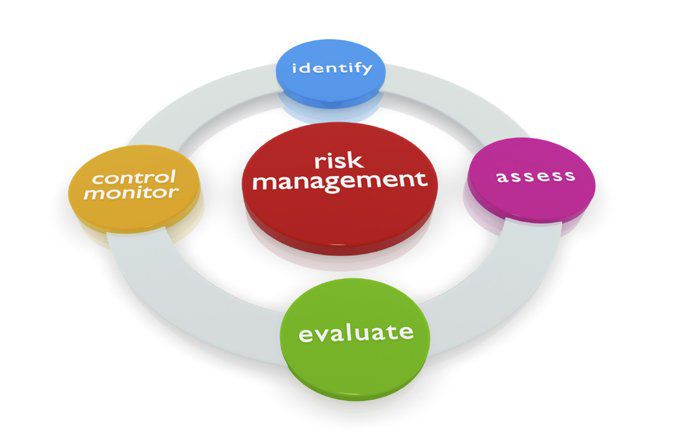01 Feb 2024
Risk Management Techniques for Stock Market Investors

We all are aware of how unpredictable a stock market can be. The money invested in stocks is only partially secure and can negatively impact the financial condition due to the volatile nature of the market. Stock market risk management is implemented to secure the money invested in the market. It is considered a continuous process of identifying, assessing, and evaluating the risks in the stock market. The risk management process in stocks minimises the losses and secures the capital invested in the stock market.
However, being proactive in managing the risk can put us in a challenging position. It can lead to missing a great opportunity and substantial financial losses from which a person or an organisation may or may not recover. Therefore, individuals must have all the required knowledge and expert trading skills to learn stock risk management techniques and book profits in trading.
Are you also planning to enter the stock market or looking for experts to help you with risk management in stocks? If yes, NIWS is the best solution for you. NIWS is a stock market course in Delhi that offers stock market and career-oriented online and offline courses for investors and traders. Connect with the experts now to explore the courses more.
And for those looking for the details of risk management techniques, our experts have complete detailed descriptions for you. Scroll down the details to explore more!
How Does Risk Management in the Stock Market Work?
Risk management in the stock market is essential to the investment strategy. Risk management is one of the main strategies to ensure your stocks are not at risk and you are maintaining them well. These strategies aim to minimise losses and protect capital— key components that can help manage risk include-
Risk Identification
At the initial level, pinpointing and identifying the potential risks that could impact the investment portfolio is very important. This risk identification can be done by examining the historical data, attending risk workshops, and brainstorming the potential risks. You can identify risks associated with the portfolio.
Risk Assessment
It is a very crucial step in the risk management process. It involves a complete evaluation of the risks identified during risk identification. The goal is to prioritise the risks with a higher likelihood of occurrence. This is usually based on the severity of the risk associated with the portfolio. Organisations and individuals can allocate resources effectively by systematically assessing and prioritising the risks.
Risk Evaluation
Based on the assessment, the potential risks are further evaluated based on their significance and priority. The importance of priority can be defined by conducting an analysis-
- Quantitative Analysis: This analysis is more numeric. It uses verifiable data to analyse the effects of risk events occurring.
- Qualitative Analysis: This analysis is more subjective. It includes qualitative scales like high, medium, and low. The risk is recorded in a risk assessment matrix to communicate the risk with the stakeholders
Risk Treatment
Risk treatment is a step that includes how diagnosed risks can be reduced, steps to lessen the chance, and the way we can avoid the threat. Risk treatment objectives enhance the probability of accomplishing the goals and, at the same time, minimise the unfavourable consequences of uncertainties.
Risk Management Techniques for Market Traders
Risk management techniques/tactics are to keep trading and an eye on the market. Buy the stocks when they are cheaper, sell them when the share price rises, and allocate the new money in the right place. Some of the techniques for market traders are-
Hedging
Hedging is the technique used to minimise the risk of drastic price movement in another asset. It is a strategy used to lower the risk of losing money. It is like buying insurance for your money invested in the stock market. Some common examples of hedging include- future contracts and Options contracts.
Diversification
Diversification is the threat management approach that spreads investments into different areas. The idea is straightforward: don’t position all of your money in one region; diversify it so that if you are making losses from one in every one of your investments, you could get better from the other investment.
Benefits of Diversification
- Reduced Risks: As the capital is distributed amongst different assets, this, in turn, helps maintain the value of the overall portfolio.
- Consistent Returns: Due to diversification, chances of consistent and stable returns increase after a particular period.
- Less volatility: When the capital is invested in different areas, it reduces volatility, as the underperformance of one investment does not increase panic and results in making hasty decisions.
- Volatility-based stops: This is based on the volatility of the market. This helps in preventing premature exit from the market.
- Trailing Stop loss orders: This tool helps automatically adjust as the security price is moving in a positive direction.
Stop Loss and Targets
Stop Loss and Target are both tools for risk management. Target is a technique in which you pre-determine the price you wish to sell your securities to realise the profits. This price is determined before you purchase the stocks. Target aims to lock the profit at a pre-determined level.
Stop Loss is a tool that aims to minimise Loss. In Stop loss, the investor pre-determines the security value they are ready to sell to avoid further losses.
Strategies For Adjusting Stop-Loss Orders In Changing Market Conditions
Portfolio Management
By continuously monitoring and assessing the portfolio, you can adjust the portfolio. This can be done by observing the changing market conditions and analysing the data.
Dollar-Cost Averaging
This technique involves investing in the stock market at regular intervals. Investing in different securities regardless of the market conditions, you can leverage market volatility to get more shares when the prices are lower.
Fundamental Analysis
In this, an in-depth analysis is conducted to know the worth of the shares by assessing their financial statement, understanding the market trends and analysing the factors that can affect these prices.
Conclusion
Managing the trading portfolio continuously is essential. Through this, you can avoid facing huge losses, and by understanding the market trends, you can also gain some profit by investing in the correct securities.
Implementing Risk management techniques is crucial for individual investors and organisations as well. It helps minimise losses and saves capital invested in the stock market. The share market is not only volatile but also unpredictable. With these risk management techniques, you can minimise the potential risk.
If you are also interested in the stock market and wish to understand its nature and technicalities, connect with NIWS. It is the best stock market institute in Delhi and Jaipur.
